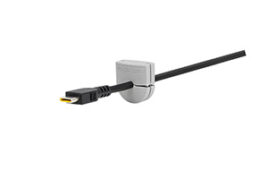The CMC-TC monitoring system is a sensor-based security solution for data centers, IT infrastructures and industrial applications. Until now measuring stations have been connected by cable. With its CMC-TC wireless sensor network, Rittal has now found a solution to the challenge of installing sensors outdoors or at inaccessible locations on racks or in data centers.

The sensors in Rittal’s CMC-TC monitoring system measure ambient parameters such as humidity and temperature, collect important technical data and control access to data centers. In the past, if a sensor was needed outdoors or at an inaccessible location in the data center, monitoring was not possible at this location. Rittal’s computer-controlled CMC-TC wireless sensor network now provides a solution to this problem.
The wireless I/O unit is the core feature of Rittal’s wireless sensor network. It is cabled with Processing Unit II (PUII). This connection is used for the purposes of data exchange and to supply power to the wireless I/O unit. Up to four wireless I/O units can be connected to one PU II. Via an antenna fixed to the housing these I/O units collect information from up to 16 wireless sensors. There are four different sensor types to choose from.
Indoors, the sensors can operate at distances of up to 50 meters, with 200 meters possible outdoors – in both cases this is subject to a clear line of sight. These ranges can be increased using repeaters. Generally, however, the line of sight is not a prerequisite for the system to function.
Radio transmission is via a frequency range (ISM band) of 2.4-2.48 GHz, which is license-free for the user. The use of so-called chirp impulses provides a high degree of security against interference from other radio communication systems in the same frequency range.
The wireless sensor network can be used in racks, cabinet units, IT rooms, buildings, factories, warehouses, industrial plants and outdoors. This means that even cross-industry use is possible. The wireless sensors will function for up to five years. This is because they are fitted with long-life 3.6 V primary lithium cells, which can simply be replaced if required. The modern chirp radio transmission technology achieves particularly low power consumption.
::Design World::
Filed Under: I/O modules, CONNECTIVITY • fieldbuses • networks, Wireless • 5G and more





Tell Us What You Think!